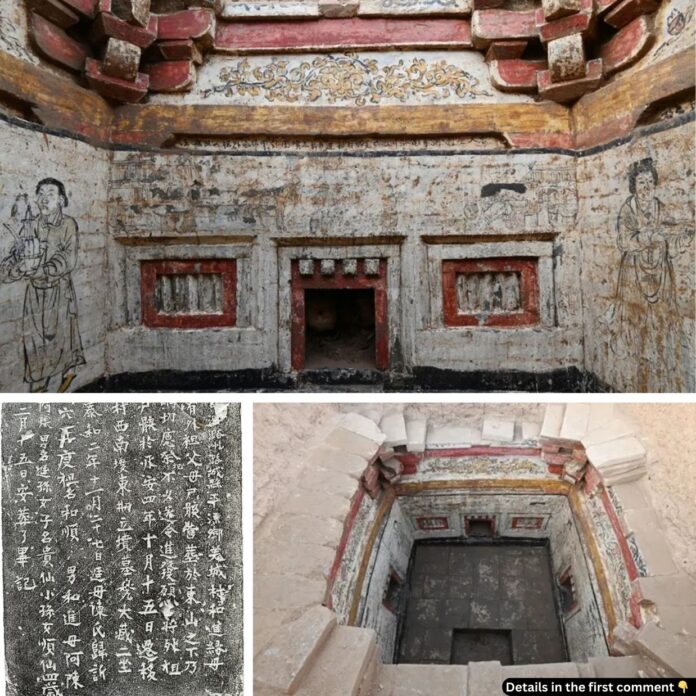The discovery of elaborately decorated Jin Dynasty tombs in Shanxi Province, China, offers a captivating glimpse into the rich cultural tapestry of the 12th and 13th centuries. Unearthed by archaeologists from the Changzhi Archaeological Research Institute, these tombs reveal the artistic achievements, burial customs, and complex societal values of the Jin Dynasty. As some of the most well-preserved burial sites from this era, they provide invaluable insights into a fascinating period of Chinese history.
The Discovery: Details of the Tombs
In November 2023, archaeologists uncovered three tombs labeled M19, M20, and M21 on the outskirts of Changzhi city. Though these tombs had suffered from looting and damage over the centuries, their remarkable murals, architectural details, and inscriptions remained largely intact. The Shanxi Institute of Cultural Relics and Archaeology documented the find, emphasizing the tombs’ historical significance.
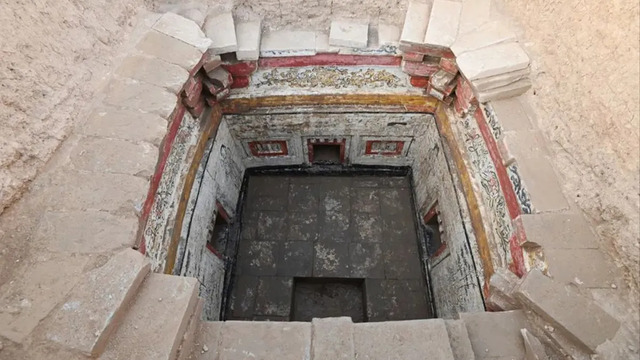
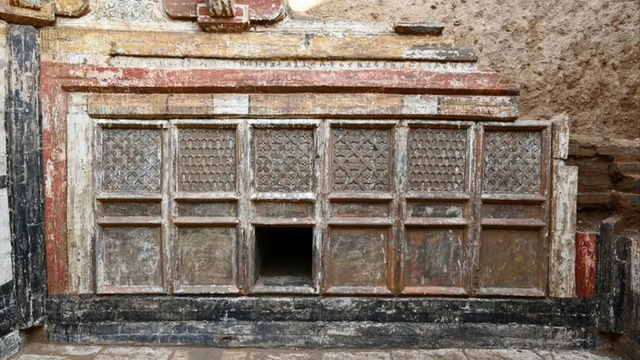
Tombs M19 and M20 share similar architectural features, including brick-carved arches, windows, floral patterns, and detailed figurines. Inscriptions on these tombs provide a wealth of information about historical events, societal customs, and the individuals buried within. Tomb M21, however, stands apart with its chamber walls designed to imitate wooden structures and murals depicting flora and fauna. The contrasting styles suggest differing cultural influences and purposes.
Art and Architecture of the Jin Dynasty
The craftsmanship evident in these tombs highlights the artistic sophistication of the Jin Dynasty. The brick carvings in M19 and M20 include intricate floral motifs, lifelike figurines, and detailed architectural elements, reflecting the era’s mastery in decorative arts. These tombs were not only places of burial but also symbolic representations of the deceased’s social status and cultural values.
Tomb M21’s unique murals, featuring vibrant depictions of plants and animals, offer a different perspective on Jin Dynasty artistry. The choice to mimic wooden structures in the chamber walls adds to its distinctiveness, perhaps reflecting regional or familial preferences. Collectively, these elements showcase the period’s diverse artistic traditions and technical achievements.
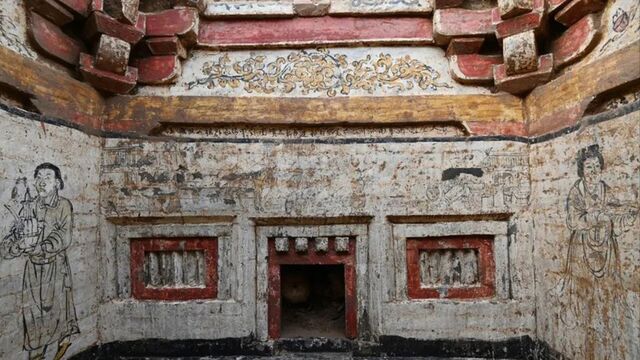
Epitaphs and Inscriptions: Stories from the Past
The inscriptions found in these tombs provide a rare and invaluable look into the history and culture of the Jin Dynasty. Tomb M19 includes detailed epitaphs dedicated to the ancestors of Qiangcheng Village, offering insights into the region’s historical and geographical context. Meanwhile, Tomb M20’s inscriptions tell the story of He Jin, a figure celebrated for his filial piety—a value deeply cherished in Chinese society.
These texts not only illuminate the lives of individuals but also serve as a window into the broader societal norms and values of the time. They highlight themes such as family loyalty, moral conduct, and the importance of commemorating ancestors, which were central to Jin Dynasty culture.
Video
Discover the rise and fall of the Jurchens and the role of identity politics in imperial policy during the Jin Dynasty – watch the video to explore this fascinating chapter in Chinese history!
Cultural Coexistence Under the Jurchen Jin Dynasty
The Jin Dynasty, established by the Jurchen people, ruled northern China from 1115 to 1234. Unlike the Han majority that dominates modern China, the Jurchens were a seminomadic people from northeastern China. Their distinct culture influenced various aspects of Jin society, including architecture, governance, and daily life.
The differences in the styles of the tombs at Changzhi reflect this cultural coexistence. While some elements align with traditional Chinese customs, others reveal Jurchen influences, such as the unique murals in Tomb M21. This blending of traditions demonstrates the dynasty’s ability to adapt and integrate diverse cultural practices while maintaining its identity.
Burial Customs and Social Values
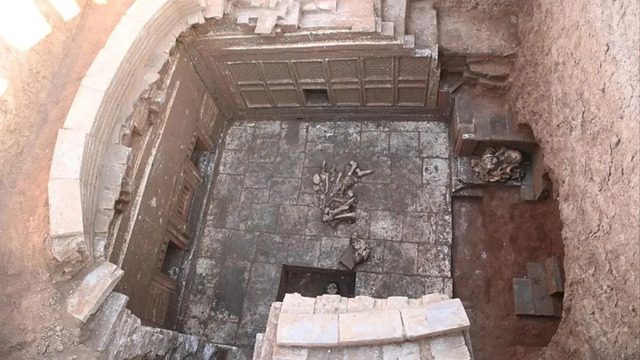
The Jin Dynasty tombs provide a detailed record of burial practices during this period. The presence of intricate murals, brick carvings, and inscriptions suggests that significant effort was invested in honoring the deceased. These tombs were not merely burial sites but expressions of the individual’s social standing and family’s devotion.
The recurring themes in the murals and inscriptions, such as filial piety and moral virtue, underscore the era’s societal values. These customs reflect a deep respect for ancestry and a belief in the afterlife, where material goods and symbols of status were thought to accompany the deceased.
Challenges of Preservation and Interpretation
Despite their remarkable preservation, the Jin Dynasty tombs have faced challenges from looting and natural degradation. Archaeologists have worked diligently to document and conserve the murals, carvings, and inscriptions, ensuring their historical value is not lost.
Interpreting the tombs also poses difficulties, particularly given the cultural diversity of the Jin Dynasty. The coexistence of Jurchen and Han traditions in these tombs requires careful analysis to understand their significance fully. This blending of cultures is both a challenge and an opportunity for researchers seeking to uncover the nuances of Jin society.
The Broader Historical Context of the Jin Dynasty
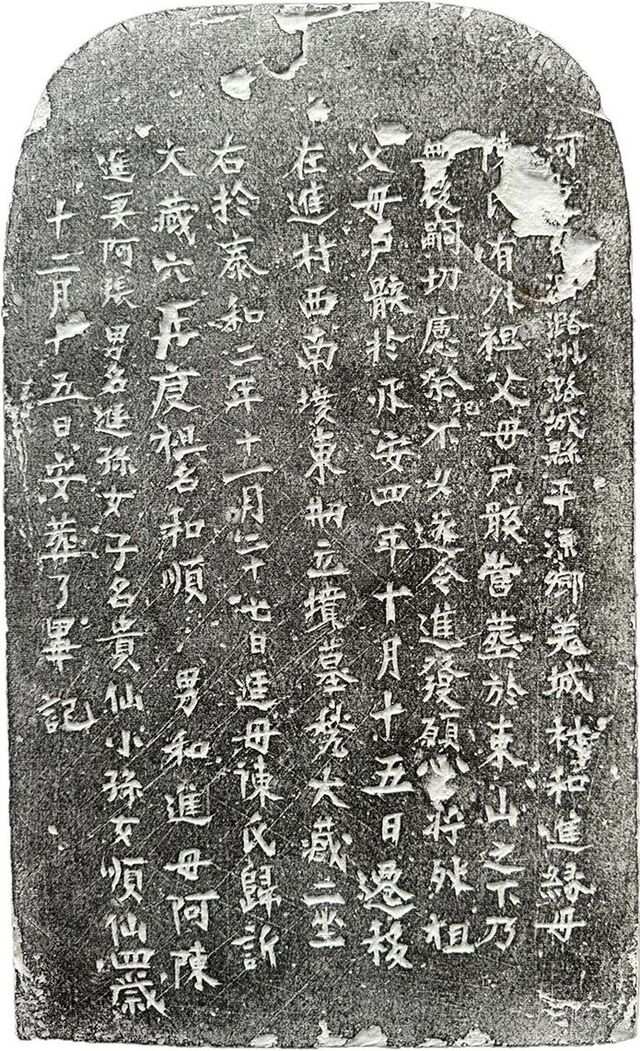
The Jin Dynasty emerged as a powerful state during a period of political upheaval in northern China. It rose to prominence by overthrowing the Liao Dynasty and later clashing with the Southern Song Dynasty. However, the dynasty’s rule came to an end in the 13th century when the Mongols invaded.
The Jurchen rulers maintained a dual administrative system to govern their diverse population, reflecting their adaptability and pragmatism. The tombs in Changzhi offer a tangible link to this era, providing a deeper understanding of how the dynasty balanced its non-Han origins with the traditions of its Chinese subjects.
Modern Narratives and Historical Identity
The discovery of these tombs has sparked discussions about the portrayal of non-Han cultures in Chinese history. While the Jurchens were distinct from the Han majority, modern narratives often emphasize their contributions to Chinese culture. This perspective aligns with efforts to present a unified historical identity for China.
However, acknowledging the unique aspects of Jurchen culture enriches our understanding of the Jin Dynasty. The tombs in Changzhi highlight the dynasty’s cultural diversity and its role in shaping northern China’s history during the 12th and 13th centuries.
Conclusion: A Rich Tapestry of History
The Jin Dynasty tombs of Changzhi are more than archaeological artifacts; they are windows into a vibrant and complex past. Through their murals, inscriptions, and architectural details, these tombs reveal the artistic, cultural, and social achievements of a remarkable era.
As researchers continue to study these burial sites, they uncover new layers of history that deepen our appreciation for the diversity and richness of Chinese civilization. The discoveries in Shanxi Province remind us that history is not a monolith but a tapestry woven from the threads of many cultures and traditions, each contributing to the story of humanity.
